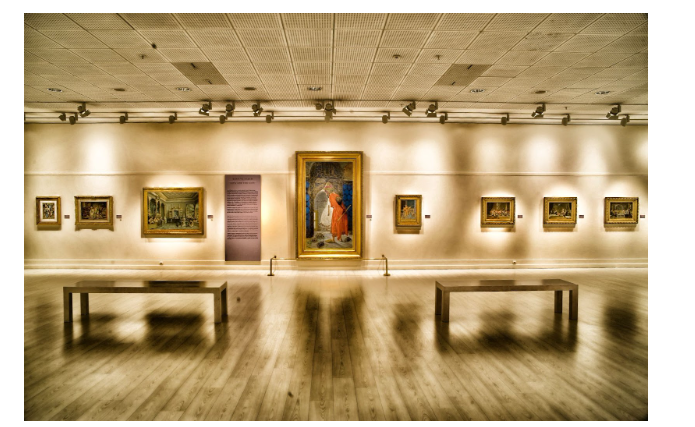How to Set Up Your First Art Gallery

Starting an art gallery can be an exciting way to share your passion for art while creating a space for artists and collectors. Whether you’re aiming for a temporary pop-up or a long-term establishment, it’s important to plan carefully to meet your goals and budget. Here’s how to get started.
Choose the Right Space
The first step in setting up an art gallery is finding the right location. If you’re just starting out or working with a small budget, short-term leases or pop-ups are great options.
For example, you can rent a space for a few weeks or months instead of committing to a long-term lease. This gives you flexibility and lowers costs. Studies show that pop-ups can cost 40-60% less than permanent leases, making them a good choice for testing your concept or building your audience.
If you want a more permanent space, look into long-term leases. These are ideal if you plan to grow your gallery into a stable business. However, long-term leases are more expensive and involve higher risks because they are hard to get out of, as you’ll need to commit to rent and utility costs for a year or more.
Location is key; spaces in busy urban areas such as art galleries in Mayfair might attract more visitors but can be very costly for a new gallery, while suburban or shared spaces might be more affordable.
Consider Alternative Spaces
You don’t always need a standalone gallery to exhibit art. Many successful gallery owners start by using existing spaces, such as cafes, community centers, or even other galleries.
Collaborating with existing galleries is an especially affordable option. You can negotiate to rent a section of the space or arrange a profit-sharing deal. Data from a recent art industry report revealed that nearly 25% of emerging gallery owners start their businesses in shared or alternative spaces.
Another creative idea is to use online platforms to showcase your collection. Virtual galleries are growing in popularity, especially since the pandemic, and they allow you to reach a global audience without the costs of renting a physical space.
Set Up Your Gallery Space
Once you’ve chosen your space, make it ready for displaying art. Proper lighting is essential, as it highlights the artwork and sets the right atmosphere. Invest in adjustable gallery lights to give you flexibility. Create a clean and professional layout with enough space for visitors to move around comfortably. If you’re on a budget, you can source second-hand display materials like easels, shelves, and pedestals.
Promote Your Gallery
Marketing is crucial to attract visitors and buyers. Social media platforms like Instagram and Facebook are powerful tools for showcasing art and announcing events. If you’re running a pop-up gallery, promote your short-term event as a unique, time-limited experience to create excitement. Collaborate with local artists and influencers to spread the word. Hosting an opening night or free workshop can also draw people in and help build connections.
Work With Artists and Collectors
Establish strong relationships with both artists and buyers. Decide on a commission structure or rental fee for artists who showcase their work in your gallery. Keep communication open and professional to ensure a smooth partnership.
Whether you’re starting small with a pop-up or aiming for a long-term gallery, flexibility and creativity will help you succeed. Take small, calculated steps, and your vision can grow into a thriving hub for art lovers.
